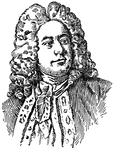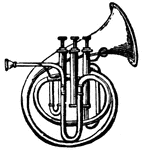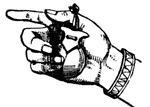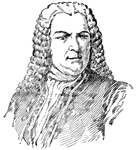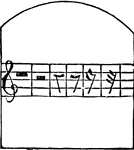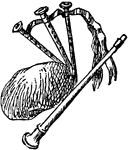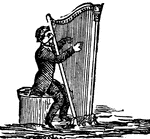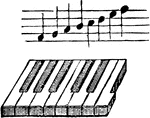Kin
"The principle of the sound of silk is exemplified in the Kin or Ch'in, made of twisted silk being stretched…

Sheng
One of the most important musical instruments in use among the Chinese, one that is indispensable to…
Che
"Another [Chinese] stringed instrument is the Se, (also written Che), which had originally 50 strings.…

Violoncello
A stringed instrument of music; a bass viol of four strings, or a bass violin with long, large strings,…
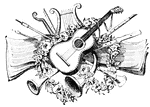
Instrument grouping
A grouping of musical instruments including a guitar, lyre, and horns together with a festoon and sheet…
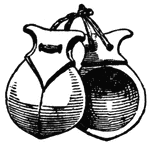
Castanetes
An instrument composed of two concave shells of ivory or hardwood, shaped like spoons placed together,…

Civil War Musical Entertainment
"Extempore musical and terpischorean entertainment at the United States arsenal, Baton Rouge, La., under…
!["A New Year's Day Contraband Ball at Vicksburg, Miss. The [African Americans] preserve all their African fondness for music and dancing, and in the modified form which they have assumed here have given rise to [African American] dancing and melodies in our theatres, a form of amusement which has enriched many."— Frank Leslie, 1896](https://etc.usf.edu/clipart/11600/11644/contra-ball_11644_mth.gif)
Contraband Ball
"A New Year's Day Contraband Ball at Vicksburg, Miss. The [African Americans] preserve all their African…

Bucktail Recruit
"Recruiting in Philadelphia, Pa., for the Bucktail Pennsylvania Regiment, August, 1862. This famous…

Front Royal
"Front Royal, Manassas Gap Railroad, Blue Ridge Mountains in the distance- the Federal army entering…
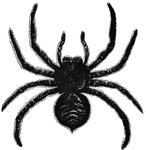
Tarantula
"The most celebrated of the Lycosidae is the Tarantula, Lycosa tarantula, of Southern Europe,…
Ophicleide
"The Ophicleide is a wind instrument of metal, invented to supersede the serpent in the orchestra and…
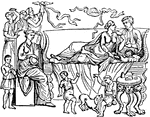
Accubatio
"The act of reclining at meals. The Greeks and Romans were accustomed, in later times, to recline at…

Salatio
"Dancing. The dancing of the Greeks as well as of the Romans had very little in common with the exercise…
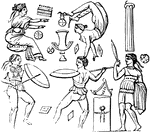
Salatio
"Dancing. The dancing of the Greeks as well as of the Romans had very little in common with the exercise…
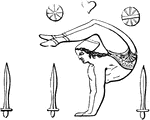
Salatio
"Dancing. The dancing of the Greeks as well as of the Romans had very little in common with the exercise…
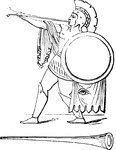
Roman trumpet
"There appears to have been no essential difference in form between Greek and Roman or Tyrrhenian trumpets.…

Curved buccina
"The buccina is curved for the convenience of the performer, with a very wide mouth, to diffuse…
Straight buccina
"A copy of an ancient sculpture taken from Blanchini's work, it still retains the original form of the…
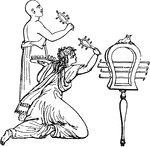
Sistrum
"The sistrum was an Egyptian instrument of music, used in certain ceremonies by that people, and especially…

Egyptian harp
"That the Egyptians paid great attention to the study of music and had arrived at a very accurate knowledge…
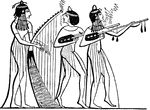
Egyptian Band
"That the Egyptians paid great attention to the study of music and had arrived at a very accurate knowledge…
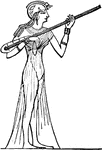
Egyptian musician
"That the Egyptians paid great attention to the study of music and had arrived at a very accurate knowledge…
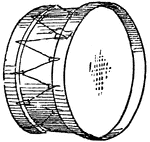
Drum
An instrument of music, consisting of a hollow cylinder, upon which a piece of vellum is stretched,…
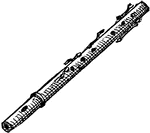
Flute
A cylindrical wind instrument, with holes along its length, stopped by the figners or by keys opened…

Guitar
A stringed instrument resembling the violin, but larger, and having six strings, played upon with the…








